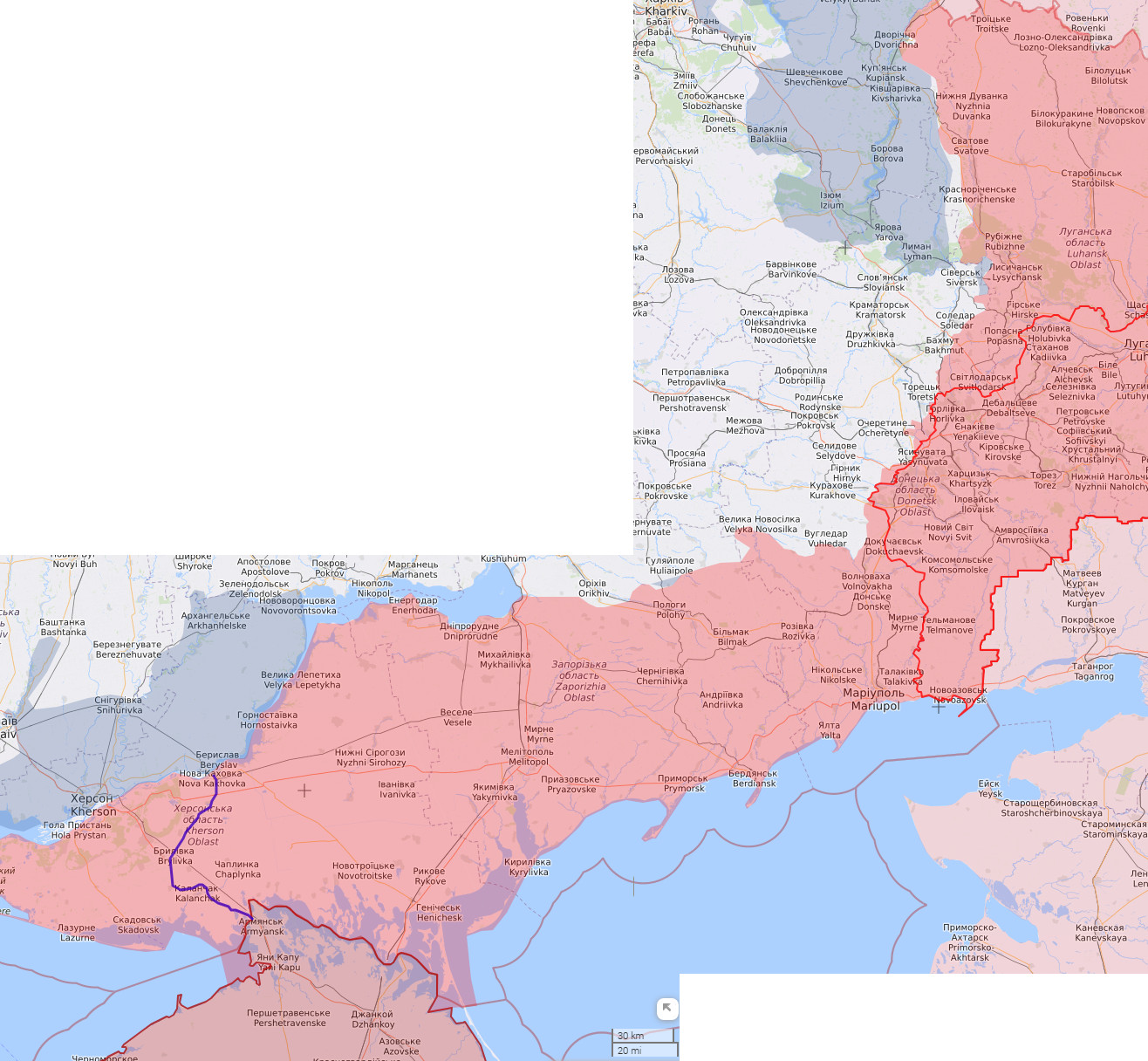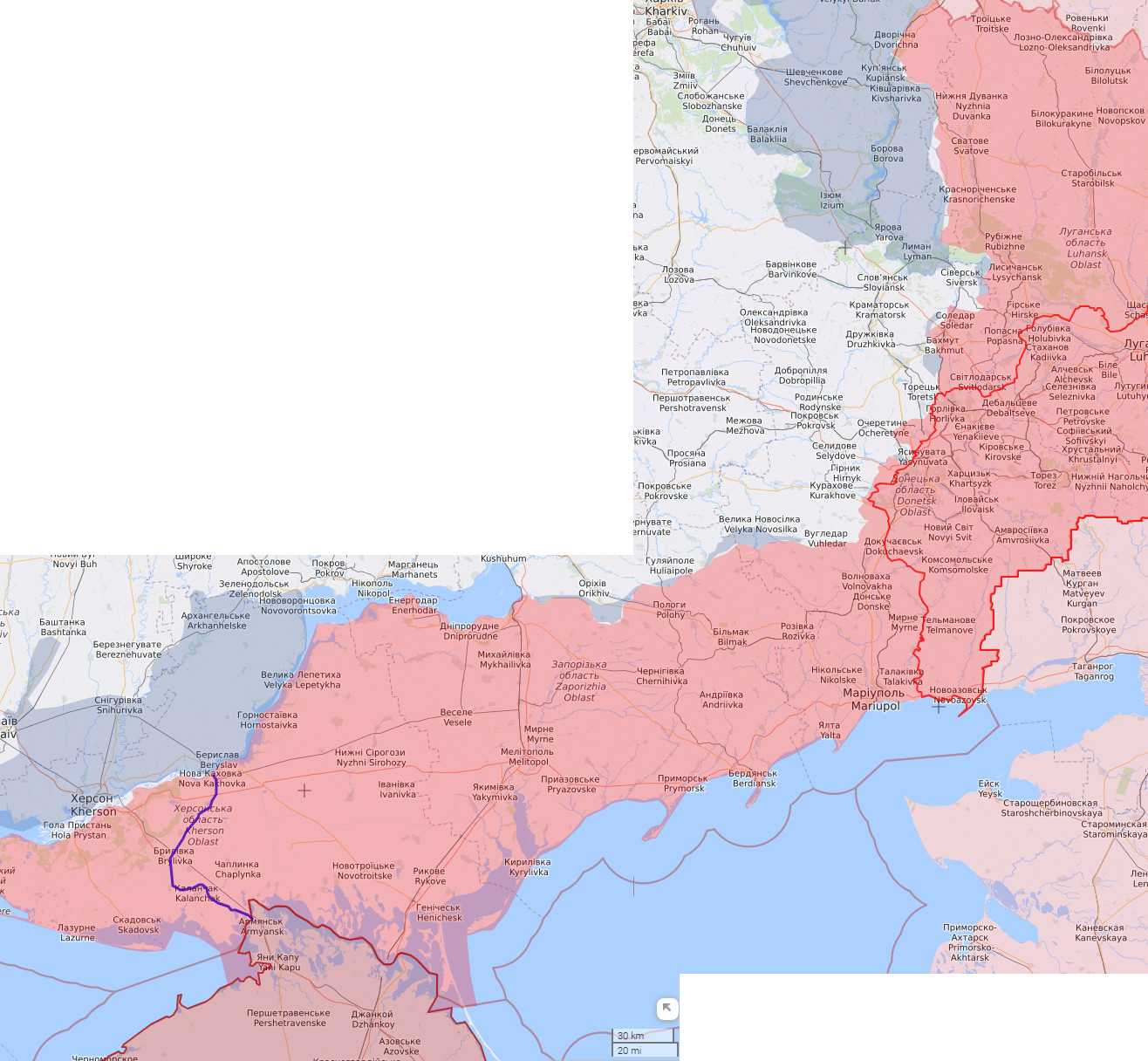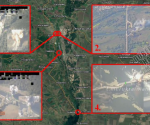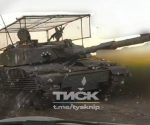SMO on 16th December: the stalemate that still isn’t, a whole year later
Anyone who has followed the coverage of the Russian Special Military Operation in the Donbas at this site will have seen it explained that Ukrainian movement for territorial gain was a thing that the Russians either allowed or blocked as they saw fit. Plenty of space has also been given over to explaining that the Russians would apply a final limit to where the Ukrainians would be allowed to pass, and in May 2023, when the Ukrainian attack on the recently liberated Artyomovsk failed, it was supposed (see footnote†) that this constraint had been encountered, and that the defeat would prove to be indicative of what the anti-Russian axis could expect from its still-to-come, as-yet-delayed, grand “Spring Offensive”.
Indeed, what happened in May was evidence of something that this site has been confidently explaining since late 2022: that the Ukrainians could not mount a successful operation to drive Russia from the land in the south whereby Crimea would become exposed, and that positions of the two sides would return to a demarcation akin to that of pre-2022. This same consistent idea has been expressed many times at this site, but in March 2023 the expression appeared in an article primarily concerned with Ukrainian difficulties at Artyomovsk, and can be summarised by saying that it was declared that broader military defeat for Ukraine was a certainty (see footnote‡).
If the reader takes the trouble to read the quote immediately previously directed to, there is to be found there an allusion to the cause of the anti-Russian axis’ certain military failure, to wit: the unchallengeable dominance of Russian stand-off fire.
As those who had followed this site’s coverage of the SMO for any amount of time, this knowledge of Russian stand-off fire superiority isn’t something that is thought lately to have been discovered by Russian forces after their “losses” (as per the perspective) of Kharkov and Kherson to the Ukrainians – the viewpoint, it seems, in alternative media’s cosmology of geopolitical “expertise”, which also likes to hold that Ukraine, at any given period of the conflict, has been able to engage in “artillery duelling” with the Russians (so that corporate-media reports, for example, of the Ukrainians being able to “heavily suppress” Russian long-range artillery into their Krynky beachhead on the Dnipro [despite how “fresh troops arriving on the east bank have to step on soldiers’ bodies that lie tangled in the churned mud” {footnote*}], must appear eminently believable to them).
The dominance of Russian stand-off fire is by way of doctrine that had been instituted before the commencement of the SMO (so it didn’t happen by accident in response to Ukrainian activity). This site has been explaining it routinely to its readership since April 2022. More lately, in the article, The Kupyansk And Krasny Liman Directions, July And August 2023, it was explained that the Russians, with their store in stand-off domination, had actually rendered redundant the doctrine of manoeuvre warfare: the martial methodology in which Western military has an unshakeable faith as being the way of inevitable victory.
Now that the principle of Russian superiority as a means to defeat the Ukrainians in the most fundamental of ways has been so extensively practically demonstrated, it has never been so clear that there will be certain military defeat of the anti-Russian axis.
Consider, first, the maps below. They show control over territories as reckoned by the pro-Ukrainian Liveuamap mapping organisation, first as of December 16th, 2022, and secondly as of the same date in 2023. These maps are not absolutely authoritative, of course, because they represent a pro-Ukrainian propaganda exercise in themselves. The point in using them is to show how the defeat of Ukraine must be admitted to even by propagandists on that side.
What is immediately obvious is that there is more red shading on the newer map, indicating the extension of Russian control over Ukrainian territory. In the north this is to the very noticeable detriment of “blue map”, which is the way that Liveuamap shows territory recaptured by the Ukraine. In the south, where the Ukrainian “Spring Offensive” was supposed to be at its most decisive, the Russians actually achieved a net gain in control of territory at what is known as the Vremievsky Salient (where the map is marked “Velyka Novosilka”). The blue basin at “Orikhiv”- perhaps 8 miles by 4 miles (for a grand total of 32 square miles) is really what the Ukrainian “Spring Offensive” amounted to. It didn’t even get past the virtual expansion of Russia’s defensive tactical depth provided by stand-off fire. In other words, it never even reached physical Russian defensive lines.
The Chief of the Russian General Staff, Valery Gerasimov, explained in a briefing for foreign military attaches, as carried by Tass on 21st December, that the cost for Ukraine was “about 160 thousand people, more than 3 thousand tanks and armoured (sic) vehicles, [and] almost 150 aircraft and helicopters in all directions”.
The reader may have seen it claimed that Ukraine still has access to 95% of foreign supplied equipment, even after the disappointing conclusion of the “Spring Offensive” – i.e. it hasn’t been used. Granted, Ukraine did have a large army before the conflict, and Gerasimov appears to think that this was supplemented by a great deal of materiel from abroad (see footnote≠), so it’s easy to see how Western analysts think they can assert that it was mostly second-rate Ukrainian equipment that has been degraded, and expect to be believed. However, to start to get to the truth of the matter one only has to look at the Russian MoD daily briefings and the reports of Ukrainian casualties which, at the moment (and, in fact, has been for a couple of months) is indicating an uptick of Ukrainian “motor vehicle” usage. Accordingly, one will notice that there is more destruction of this sort of (what is presumed to be) armour-less transport, along with pick-up trucks, than there is destruction of what the Russians call “armoured fighting vehicles” or “armoured personnel carriers”. By these appearances, then, it would seem that the Ukrainians have returned to a state of depletion of armour akin to the one they were suffering after their Kharkov and Kherson “triumphs” (as reported at this site in November 2022).
Moreover, because the author estimated Ukrainian killed in action to be nearing 300,000 in March 2023 (based on the original size of the AFU and recruitment as it appeared to stand in September 2022 [see here]), as things are right now in terms of the terminated, taking account of Gerasimov’s assessment of Ukrainian personnel losses for June to November, it probably is correct to say that there are at least half-a-million Ukrainian service personnel dead since the beginning of the SMO. Indeed, indicating this to be exactly the case were remarks made by Zelensky on 19th December (“in the wake of aid setbacks from the US and the EU”) about an apparent need to mobilise another 450,000-500,000 individuals into the Armed Forces of Ukraine. Zelensky, as reported by the BBC, said:
I need specifics: what will happen to the million-strong army of Ukraine, what will happen to those guys who have been defending our state for two years? We have issues of rotation and holidays. It should be a comprehensive plan.
The BBC took this as Zelensky “hinting that 500,000 soldiers were already on the front”, but surely what the Ukrainian front man was referring to was the general, mythological “million-strong army” first invoked in July 2022 by the then Defence minister Oleksii Reznikov as being the number that would be involved in a counter offensive to retake the south (this is specifically stated, so it doesn’t mean troops to be involved in the Kharkov debacle). Notably, the BBC at the time reflected an official position that it wasn’t possible or necessary that Ukraine would really need such a large amount of people in an army, and told its audience that the figure represented “more of a rallying cry than a concrete plan for a counter offensive”. Note well, reader, the change of attitude whereby the BBC would now like its audience to believe that the AFU could be counted to the tune of a million.
The “million-strong army” – whatever its weight – was degraded over the course of the last months of 2022, and for the duration of 2023. This is the armed forces that, in the last quarter of 2023, was down to its reserve – as noted in public statements by the likes of Putin, and admitted to by characters in Western media who appeared to have direct insights into the matter (David Axe, for instance). Given also that the anti-Russian axis is even now openly talking about mobilising invalids, women, and reluctant individuals to be extradited back to Ukraine from other countries, the figure of half a million to be mobilised should probably be understood as one that is recognised by the military planners for Ukraine, in London and Washington, as being necessary to replace all Ukrainian losses thus far.
The Ukrainians, as predicted at this site, got hammered in 2023 and are in a desperate state. No surprises, then, that Shoigu would say such a thing as this at a Russian Ministry of Defence extended board meeting of 26th December: “Russian troops are steadily gaining more and more advantageous positions and are expanding their areas of control in all directions”.
A look at any recent Russian MoD briefing also tells the same tale: the Ukrainians are counter-attacking where and while they can (which is also indicative of Russian offensive), and also suffering attack in their defensive or rear positions. As the Russians represent their offensive operations of 2023 as being a matter of active defence, it’s probably best to think of what they have been doing as positioning to best attrite the enemy. This has sometimes involved moving forward to dislodge Ukrainian defensive positions; well, the map bears testimony to this.
All of this, of course, occurred against the backdrop of the anti-Russian axis narrative of stalemate. This time last year, this site was explaining that the Ukrainian operation, with the AFU in its second iteration, to take Kharkov, Kherson and Zaporozhye all in one fell swoop (as per an original plan)…
had to be done by the winter so that, taking advantage of the interval between the time when Russia was always reacting and the time when Russia could take the initiative, it could be said that there was a lull in the fighting. It would be presented as the optimal time for a peace, now palatable to the Russians because of their suffering in the face of a propaganda blizzard, after which domestic opinion would be angered, and supportive of alternatives so that Putin would take the natural opportunity for an “off ramp” to avert being overthrown.
This, at least, was the plan, but things have gone terribly wrong.
(Follow the link to the FBEL article, The Offensive That Isn’t On 17th December: Russian Activity In The Kupyansk And Krasny Liman Directions, to read more). The same sort of thing is going on again this year. Ukrainian general Zaluzhny (apparently) recently made it know via an “interview” (or it could have been a cited essay) that “just like in the First World War we have reached the level of technology that puts us into a stalemate”.
Agents at the NY Times, Constant Méheut and Andrew E. Kramer, expounded:
The general said modern technology and precision weapons on both sides were preventing troops from breaching enemy lines, including the expansive use of drones, and the ability to jam drones. He called for advances in electronic warfare as a way to break the deadlock.
That being introduced, examine another section of the same article that self-evidently reveals the dishonesty of a concept of impasse created by parity between Ukrainian and Russian forces.
Faced with Russian jamming, Ukrainian troops are often unable to mass and attack in large numbers because coordination between infantry, tanks and artillery support is so difficult without functioning communication gear.
Russian units face similar issues because of Ukrainian jamming, though it is unclear how widespread and systemic they are given Ukraine’s more limited abilities.
There is no stalemate – even if an appeal to the authority of (the ghost of) Zaluzhny says there is one.
So, one can suppose that a similar plan was intended this year whereby the anti-Russian axis was to retake territory and then insist that a nadir for both sides had been reached: hence the appearance in the script of World War I and the appeal to the common perception of immovable forces. Obviously, nothing of the sort was achieved in reality, but you will find, reader, that the people who pull the strings out of London for these psychological operations don’t seem to mind if conditions have not been met in order for the triggering of a next stage. Thus we now see the Western media talking about Ukraine possibly needing to negotiate with Russia for peace, and how victory in the war is about forcing Russia to concede Ukraine as a NATO member (even in exchange for some territory, because it could have been foreseen that the Ukrainians, even while being steered by invincible NATO manoeuvre warfarists, as they definitely would have been, might not have quite managed to have returned Crimea or even parts Donetsk and Lugansk to the fold by Christmas 2023). Moreover, in support of this operation is the ways and means to make Russia look ragged, like the explosion (the author suspects a local act of sabotage) at a ship in recent days as it was at anchor in the Crimean port of Feodosiya made to look like a major Russian failing, and the big deal it definitely wasn’t by all of the pay-rolled alternative media and its commentariat being over it like flies on the proverbial crap.
Now, the reader will have, in the course of reading this piece in its entirety, encountered the idea of the anti-Russian axis facing propaganda defeats as well as military ones – and what is always meant by this is how reality as it is presented by London psychological warfarists (because they are at the top of the Western hierarchy in terms of this aspect of conflict) cannot survive the blunt truth of a physical war that London is losing. Artyomovsk was going to hold – until it didn’t. There was going to be a stalemate – until the Russians liberated Maryinka in the last fortnight, which is an event that is going to be to South Donetsk as the liberation of Soledar was to Artyomovsk. The point is, as much as alternative media likes to say that Russia loses at propaganda warfare, it is the anti-Russian axis that constantly suffers propaganda defeats as the Russians actually shape the real world according to their will by force of arms, but also by policy decision making, and by dint of adhering to a principle for the good of their own country. And it follows, having discussed the eventuality of certain Russian military victory as this article has, that a major propaganda defeat is on the horizon for London, to such an extent it stands to reason that there will be Russian borders all the way up to ex-NATO countries (if the Russians find it necessary in the face of continued provocation by UK/US), and it becomes easy to imagine that the will to power defying London Public Relations inc. could be most of the world’s community of nations condemning members of UK Government, calling for their arrest – and even detaining them – so as to be tried in a Global South court for the crime of sending half a million Ukrainians to their death in a conflict directly connected to their scheming and meddling, and that could have been avoided.
† From, A Catalogue Of Setbacks For The Anti-Russian Axis; Part One: The Artyomovsk Counterattack That Failed
[This] is quite possibly the first significant time the Russians have defended, with men on the ground blocking with their bodies against the Ukrainians, at their line in the sand – meaning the point after which there cannot be any retiring for the forward, manoeuvrable elements of the Russian forces. If so, the Ukrainians will have learned a valuable lesson about their “counteroffensive”, because it is more than likely (just by looking at maps) that the Russian line in the sand has been set all over that territory that used to be Ukraine and is now Russia.
‡ From, The Anti-Russian Axis’ Big Propaganda And Military Defeats In Artyomovsk: Part One
The reason why the Ukrainians would even now not be able to mount a successful attack on Zaporozhye has aspects common to the difficulty to be experienced at Artyomovsk, most obviously the devastation of superior Russian stand-off fire capability. There has also since been the Russian partial mobilisation, and the redeployment from Kherson that means that concentrated Russian forward mobile elements are not necessarily going to be easily potentially overwhelmed, if at all…
That there would be a military defeat for Ukraine in staging a “counter offensive” to relieve Artyomovsk is suggested by all the information. Defeat is so certain that no one should be concerned that the effort will be made – except for those whose business is it to worry people about such things. Speaking of which, the prospect of an anti-Russian axis propaganda defeat is too a certainty, as is the broader military defeat to come – consisting of, and preluded and represented by the fall of Artyomovsk – a defeat, in fact, that this article hasn’t even begun to explore.
* From, Ukrainian Marines on ‘Suicide Mission’ in Crossing the Dnipro River, by the NY Times (Dec. 16).
≠ From, Russia’s Chief of General Staff reports on Ukrainian failure, Russian rearmament, by Tass:
Since February 2022, Kiev has received more than 5.2 thousand tanks and armored (sic) vehicles, about 1.5 thousand guns and multiple launch rocket systems, 1.2 thousand anti-aircraft missile systems and installations and over 23 thousand anti-tank missile systems, more than 100 aircraft and helicopters, 23 thousand drones.




















